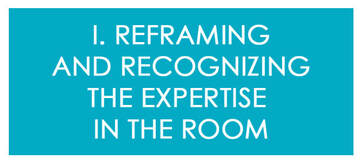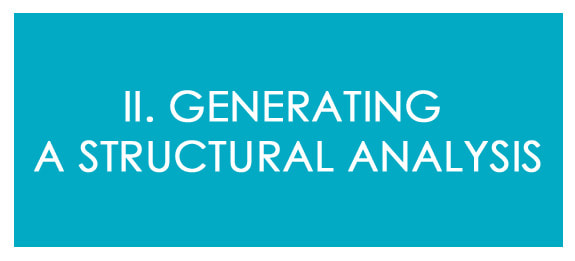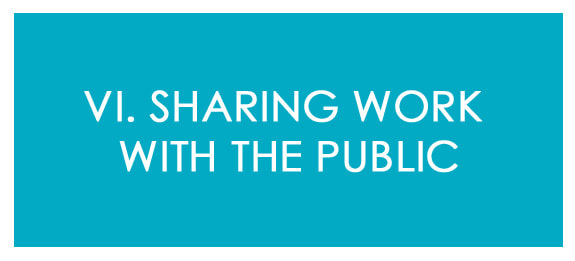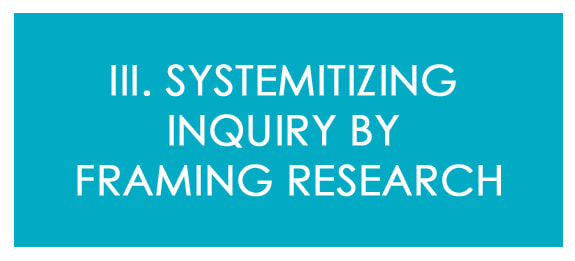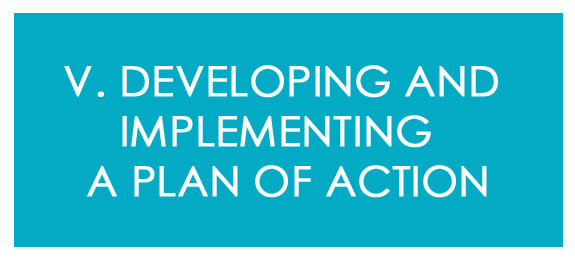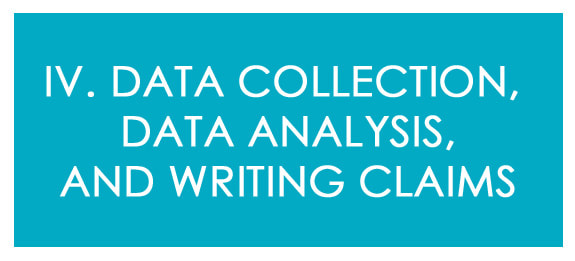Overview
The sixth phase is concerned with the publication of the research, in terms of sharing the work in written form and outside of the classroom. The written report helps shape critical literacy, as students use research-based evidence from their own findings in conversation with outside sources to generate their own conclusions. Student writing is strengthened as they come to see writing as a process and as a means to communicate their findings with others rather than just an analysis of a one-time text that may hold no special meaning to them. Meanwhile, oral, public presentations become a performance of possibility as students perform being the experts of what they have learned. The public presentations increase student confidence. They build their public speaking skills and gain pride and ownership of their learning process.
In a school context, the written report of the research can take form as an issue analysis or whatever genre you think best and that may align with your own wider curriculum or state testing practice needs. We recommend using a paper outline template and corresponding powerpoint template (see resources below). For example, the paper outline template would outline the introduction including the context, research question, research hypothesis, and background reading; body paragraphs describing the different claims with their evidence; and a conclusion with a summary of the findings, a description of an action project which was/will be completed to address the issue, discussion of limitations, and suggestions for future directions. The powerpoint presentation would have a slide for each of these components. We also recommend that the rubric, expectations, and deadlines are presented to the students from the beginning of the process so that students are aware of exactly what they need to do. See below for rubric resources.
In terms of the public presentation, Humanities Amped hosts a conference where students present their research to peers, family, and community members. You might consider hosting a similar event that is open to the public. A larger public’s presence, by bringing the “real world” in, raises the stakes higher for the students than if they were to present only to their peers. A larger public presence also makes students more nervous. Over the course of our conferences, we have noticed a pattern of self-sabotage of students who do not know how to handle this added pressure. Some of this behavior includes procrastination or refusal to complete work, negative self-talk, or skipping class. Some students have refused to attend the conference. Public speaking workshops, offering opportunities to practice in class, inviting mentors to come support, and having an in-class run through all are helpful. They will also need your help to practice how to answer questions from the public. One way is to have students role play as the audience and ask questions during your in-class run throughs. During this preparation time, however, students will mostly need you, their teacher, to give them a lot of positive feedback and remind them that they are fully capable. You will also need to be very kind and patient with yourself as students shut down, perhaps causing you to doubt whether this is a feasible project. Nevertheless, the satisfaction that your students will feel after they present will be one of your proudest moments as a teacher. The list below contains methods and resources referenced in the above text.
In a school context, the written report of the research can take form as an issue analysis or whatever genre you think best and that may align with your own wider curriculum or state testing practice needs. We recommend using a paper outline template and corresponding powerpoint template (see resources below). For example, the paper outline template would outline the introduction including the context, research question, research hypothesis, and background reading; body paragraphs describing the different claims with their evidence; and a conclusion with a summary of the findings, a description of an action project which was/will be completed to address the issue, discussion of limitations, and suggestions for future directions. The powerpoint presentation would have a slide for each of these components. We also recommend that the rubric, expectations, and deadlines are presented to the students from the beginning of the process so that students are aware of exactly what they need to do. See below for rubric resources.
In terms of the public presentation, Humanities Amped hosts a conference where students present their research to peers, family, and community members. You might consider hosting a similar event that is open to the public. A larger public’s presence, by bringing the “real world” in, raises the stakes higher for the students than if they were to present only to their peers. A larger public presence also makes students more nervous. Over the course of our conferences, we have noticed a pattern of self-sabotage of students who do not know how to handle this added pressure. Some of this behavior includes procrastination or refusal to complete work, negative self-talk, or skipping class. Some students have refused to attend the conference. Public speaking workshops, offering opportunities to practice in class, inviting mentors to come support, and having an in-class run through all are helpful. They will also need your help to practice how to answer questions from the public. One way is to have students role play as the audience and ask questions during your in-class run throughs. During this preparation time, however, students will mostly need you, their teacher, to give them a lot of positive feedback and remind them that they are fully capable. You will also need to be very kind and patient with yourself as students shut down, perhaps causing you to doubt whether this is a feasible project. Nevertheless, the satisfaction that your students will feel after they present will be one of your proudest moments as a teacher. The list below contains methods and resources referenced in the above text.
Methods
Paper Outline & Powerpoint Template
Be sure to make the connection between these two deliverables clear to students.
Paper And Presentation Rubrics
- Adapted “Six Traits” (Culham 2019) Research Writing Rubric
- Rubric to evaluate the presentation product (not delivery)
- Presentation delivery and overall content rubric
- Oral communication rubric including sections for interpersonal communication, presentation, and delivery
Public Speaking Workshop
Have a public speaking workshop with tips about power poses, voice projection, calming breathing exercises, speaking pace, eye contact, appropriate use of notecards, answering audience questions etc. You can incorporate games or activities which go along with building these skills.
Practice Presentations
As students complete certain slides, you might ask them to write notes at the bottom of each slide which they can later turn into notecards. Give students time during class to practice. The day before the presentation, have a run through. We recommend grading the run through to give students feedback, and then hold a reflection.
Public Presentations
A public presentation becomes a performance of possibility for students. You could invite parents and community members to come during school hours to see students present their research, or you could host a community research showcase after school. See here for an archive of past Humanities Amped CPAR Presentation slide decks.
Other Presentation Opportunities
Students spend so much time and energy doing their research project. The world should know about their process and the knowledge they have to contribute! As a teacher, be on the lookout for community events or opportunities where students may showcase their findings. For example, a local organization working on improving health care access may be looking for a youth perspective so your students may present their findings on teen health at one of their meetings. Encourage your students to look for opportunities to share their knowledge too.
